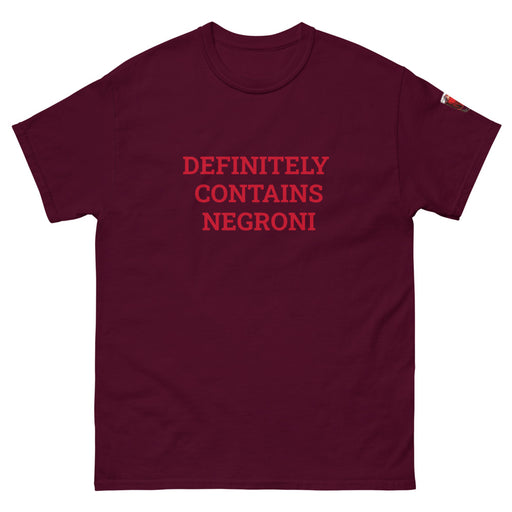When you take your first sip of a Negroni, a classic Italian cocktail with a perfect balance of bitter and sweet, you might wonder what gives it that distinctive kick. The secret ingredient lies in the tiny, potent bottles of bitters that bartenders carefully add to the mix. Bitters are the unsung heroes of the cocktail world, transforming ordinary drinks into extraordinary ones. In this beginner's guide, we'll dive deep into the world of bitters, exploring their history, flavors, and how they elevate the beloved Negroni cocktail.
The Role of Bitters in Cocktails
What Are Bitters?
Bitters are concentrated herbal extracts infused with various botanicals, roots, fruits, and spices. These aromatic compounds are used sparingly to enhance and balance the flavors in cocktails. While bitters are primarily known for their role in adding bitterness, they also contribute complexity, depth, and aroma to drinks.
A Brief History of Bitters
The story of bitters dates back to ancient times. Herbal tinctures were first concocted by monks for medicinal purposes, believed to aid digestion and relieve various ailments. As these elixirs spread, they found their way into the world of mixology, adding a new dimension to cocktails.
The most famous brand of bitters, Angostura, was created by Dr. Johann Gottlieb Benjamin Siegert, a German doctor, in the early 19th century. He developed the formula in the town of Angostura, Venezuela, and the product quickly gained popularity for its unique flavor profile.
Types of Bitters
-
Aromatic Bitters: Aromatic bitters are the most common and versatile type. They contain a blend of herbs, spices, and botanicals, often with a strong focus on flavors like cinnamon, cloves, and allspice. Angostura Bitters is a classic example of aromatic bitters.
-
Citrus Bitters: These bitters are characterized by their bright, zesty flavors. Orange, lemon, and grapefruit bitters fall into this category. They add a refreshing twist to cocktails.
-
Herbal Bitters: Herbal bitters highlight botanical ingredients like thyme, basil, and mint. They can lend a fresh, garden-like aroma to your drinks.
-
Spiced Bitters: Spiced bitters are infused with warm and earthy spices, such as cardamom, ginger, and star anise. They are often used to give cocktails a cozy, wintery feel.
-
Fruit Bitters: Fruit bitters are made from various fruits like cherry, peach, and cranberry. They bring a fruity sweetness and tartness to cocktails.
-
Specialty Bitters: Some bitters are designed to capture unique and specific flavors. For example, chocolate bitters can add a rich cocoa note to your drinks, while black walnut bitters impart a nutty depth.
The Key Component of a Negroni: Campari
Before we delve into the Negroni's intricate recipe, let's highlight one of its essential ingredients: Campari. Campari is a renowned Italian aperitif, known for its vivid red color and distinctive bitterness. It's a crucial component of the Negroni, contributing both its signature hue and its characteristic bite.
The Classic Negroni Recipe
Now that we have a grasp of what bitters are and their various types, let's unlock the classic Negroni recipe. This iconic cocktail showcases the power of bitters, balancing the flavors of gin, Campari, and sweet vermouth. Here's how to craft the perfect Negroni:
Ingredients:
- 1 oz Gin
- 1 oz Campari
- 1 oz Sweet Vermouth
- Orange peel (for garnish)
- Ice
Instructions:
-
Fill a mixing glass with ice.
-
Pour in 1 oz of gin.
-
Add 1 oz of Campari to the mix.
-
Finally, include 1 oz of sweet vermouth.
-
Stir the mixture well until it's properly chilled and well-diluted. Stirring is crucial in ensuring all the flavors meld together.
-
Strain the cocktail into a rocks glass filled with fresh ice.
-
Garnish your Negroni with a twist of orange peel. Express the citrus oils over the drink by squeezing the peel over the glass, releasing its aroma.
-
Enjoy your classic Negroni!
Bitters Beyond the Negroni
While the Negroni is a fantastic showcase for the power of bitters, these versatile flavor agents have a wide range of applications in the world of mixology. Here are some popular cocktails where bitters play a starring role:
1. Old Fashioned
The Old Fashioned is a timeless cocktail, and bitters are at its core. They're used to muddle sugar and enhance the flavors of bourbon or rye whiskey. A few dashes of aromatic bitters and a twist of orange peel create a sophisticated, spirit-forward drink.
2. Manhattan
Manhattan is another classic cocktail that relies on bitters. Typically made with rye whiskey, sweet vermouth, and aromatic bitters, it's a rich and complex drink that's beautifully balanced by the addition of bitters.
3. Whiskey Sour
Bitters in a Whiskey Sour add depth and complexity to the bright, citrusy flavors. It's a perfect example of how bitters can elevate a simple cocktail into something special.
4. Sazerac
The Sazerac is a New Orleans classic that wouldn't be the same without bitters. A rinse of absinthe and a few dashes of Peychaud's bitters create a unique and flavorful cocktail.
5. Champagne Cocktail
Even sparkling wine can benefit from the addition of bitters. A sugar cube soaked in aromatic bitters and dropped into a glass of champagne adds depth and complexity to this celebratory drink.
Mixing Your Own Bitters
While there's an extensive array of commercially available bitters, some cocktail enthusiasts enjoy crafting their own unique flavors. Here's a simplified guide to making your homemade bitters:
Ingredients:
- 1 cup high-proof alcohol (e.g., vodka, Everclear)
- Assorted botanicals (herbs, spices, fruits)
- Sweetener (e.g., sugar, honey)
- Citrus peels
- Water
Instructions:
-
Choose your botanicals: Select a combination of herbs, spices, fruits, and other flavorings that you want to infuse into your bitters. Common choices include cinnamon, cardamom, cloves, orange peel, and gentian root.
-
Macerate: Combine your chosen botanicals with the alcohol in a glass container with a tight-fitting lid. Seal the container and let it sit in a cool, dark place for about two weeks, shaking it occasionally to agitate the ingredients.
-
Strain: After two weeks, strain the liquid through a fine-mesh strainer to remove the solid botanicals.
-
Sweeten: Create a simple syrup by dissolving sugar (or honey) in an equal amount of water. Add this syrup to your infused alcohol, adjusting the sweetness to your taste.
-
Bottle: Pour your homemade bitters into small, tightly sealed bottles or dropper bottles. Store them in a cool, dark place.
-
Experiment: Now comes the fun part. Experiment with your homemade bitters in various cocktails to discover unique flavor combinations.
The Future of Bitters
As the world of mixology continues to evolve, bitters remain an essential tool in a bartender's arsenal. With craft cocktail culture on the rise, we can expect to see new and innovative bitters flavors hitting the market. The creative use of bitters in cocktails is limited only by the imagination of mixologists and enthusiasts.
So, the next time you sip a beautifully crafted Negroni, Manhattan, or Old Fashioned, take a moment to appreciate the humble yet transformative ingredient: bitters. These tiny bottles hold the power to elevate your cocktail experience, adding depth, complexity, and a touch of magic to your drink. Cheers to the world of bitters and the delightful concoctions they inspire!























